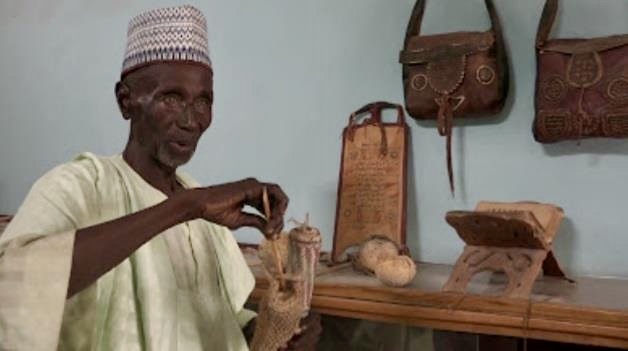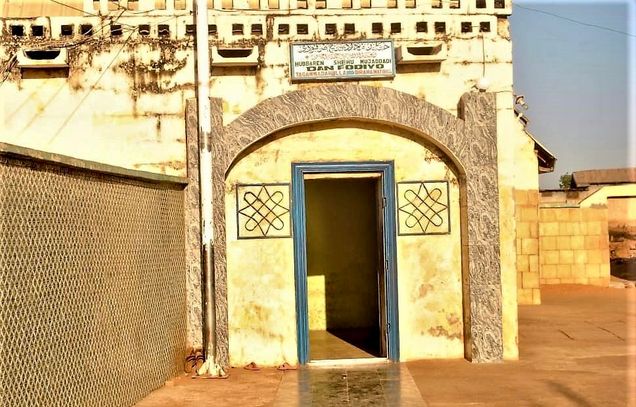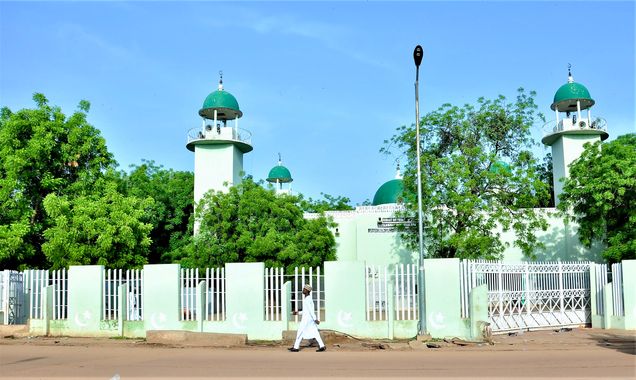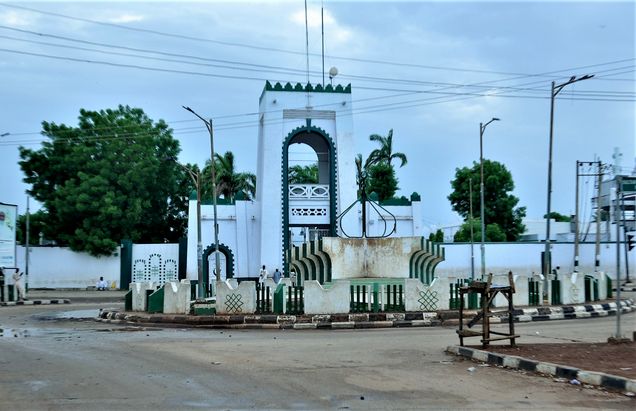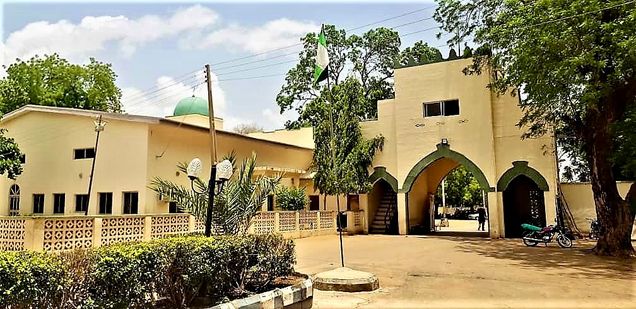Unit 4: Prof. Sadiya Omar
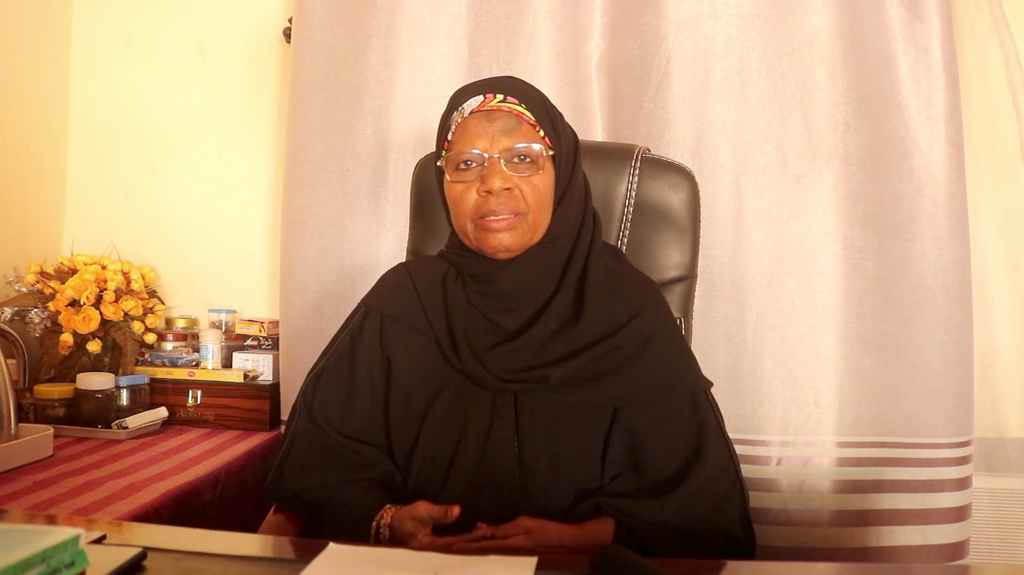
Metadata
| Title | Conversation with Professor Sadiya Omar |
| Interviewer | Malam Nasiru Abbas Babi Sokoto |
| Subject | Her biography, her struggles as an orphan, and the development of her interest in writing biographies of Muslim women clerics in the Sokoto Caliphate, including Nana Asma’u and her Yantaru Movement and Modibbo Kilo. |
| Content | Professor Sadiya Omar (also known as Sadyia Umar) was born in 1952 at Kiru Local Government, Kano State. Her father was a great Islamic cleric and a Qadi (Judge), who was posted to Kiru by His Eminence the then Sultan of Sokoto. Her mother, Hajiya Fatima (Goggon-Takai), was learned in Islam as she was the daughter of the renowned Sheikh Usman Salihu. It was the love for Islamic knowledge that led to the union between Sadiya Omar’s father and mother. However, Sadiya was orphaned at three, which deeply affected her. From early childhood, Sadiya was engaged in the peripatetic Islamic learning system. This entailed the memorization of the Qur’an, which positively impacted Sadiya throughout her life. Sadiya had a younger brother who was attending a Western school. She would cry and follow him to school for the love she had for education. A teacher in the school sympathized with her and pleaded on her behalf that she should be enrolled too. With the consent of her guardians, Sadiya was enrolled. At the age of fifteen, Sadiya was married off to her paternal cousin who was also an orphan. However, she never liked him and soon after divorced. While being a divorced woman in Hausa society is frowned upon, she resisted the pressure to remarry in favor of furthering her Western education. Sadiya Omar was fortunate that, despite all the odds, she was able to proceed to the Government Girls’ Secondary School (GGSS) Dala in Kano. And, with the influence and mentorship of Professor Kabiru Galadanci, in 1978 Sadiya graduated from Bayero University, Kano with a Bachelor of Arts in Hausa and Islamic Studies. At the time, she was going through a divorce from her then husband. Later, she met and married Dr. Omar Bello, a member of the Sokoto Caliphate royal family, a son of Sultan Abubakar III. Like Sadiya, Omar Bello had been educated in both Islamic and Western systems, and both of them worked as academics, lecturing at the Usman ɗan Fodio University, Sokoto. Omar Bello and Sadiya Omar both applied and were accepted for Master’s programs-–he in London, and she in Khartoum. Sadiya then forfeited her admission and joined her husband for his Master’s program in London. A year later, Sadiya applied and was accepted to the University of London Master’s program in Arts and graduated in 1984. Upon return to Nigeria, they both continued teaching and she enrolled in a PhD. program at Usman ɗan Fodio University, Sokoto. After decades of marriage, and being blessed with children, Dr. Omar Bello, her husband and colleague, passed away. It was yet another devastating moment for Sadiya. But she picked up and moved on with her research and writings on Muslim women clerics in the Sokoto Caliphate. Professor Sadiya Omar is one of the most influential and prolific Hausa woman writers on the Sokoto Caliphate, especially on gender issues. She has extensively written about Nana Asma’u bint Shehu Usman ɗan Fodio, both in Latin script Hausa and Hausa Ajami. She wrote about The Ƴantaru Movement, of which she is currently President, holding the title “Uwar Ƴantaru” (The Modern Mother of Yantaru). She has also written “Forty Women Clerics of the Sokoto Caliphate”; and on other topics, as well. She was a past national “Ameerah” (President) of the Federation of Muslim Women’s Associations in Nigeria (FOMWAN). She remains very active in various important committees of the Sokoto Caliphate, Jamatu Nasril Islam (JNI), and Usman ɗan Fodio University. |
| Language | Hausa |
| Script | Hausa Ajami |
| Location | Department of Hausa Language, Usman ɗan Fodio University, Sokoto |
| Pedagogical content/application | Includes relevant linguistic, stylistic, and cultural skills as identified in our assessment guidebook/ ACTFL guidelines |
| Access condition and copyright | These materials are subject to copyright and are distributed under the terms of the Creative Commons Attribution-NonCommercial 4.0 License, which permits non-commercial use, distribution, and reproduction in any medium, provided the original author and source are credited. For use, distribution or reproduction beyond these terms, contact Professor Fallou Ngom (fngom@bu.edu). |
| Contributors | Fallou Ngom, Jennifer Yanco, Mustapha Kurfi, Daivi Rodima-Taylor, Alison Parker, and Frank Antonelli. |
| Required citation information | Fallou Ngom (PI), Jennifer Yanco, Mustapha Kurfi, and Daivi Rodima-Taylor. 2023. “Conversation with Professor Sadiya Omar.” https://sites.bu.edu/ria/hausa/hausa-unit-4/ |
Videos
Hausa with English Subtitles
Hausa with Latin Script Subtitles
Community Images
(click on the image for a larger view)
Pedagogical Activities
Glossary
- Al’umma: People, general public
- Aure: Marriage
- Bege: Elegy, accolade, memory
- Biris: Ignoring, neglecting, silence
- Gyaran masallatai: To clean, fix, or repair a mosque
- Harkokin rayuwa: Social activities (singular harkar rayuwa)
- Ilimi: Knowledge, literacy, from Arabic ʿilm
- Jahilci: Ignorance, illiteracy, from Arabic jāhil
- Jaji: Community educator (plural jaji-jaji)
- Karatu: Reading, reciting, learning
- Maitaru, mai taru, mai-taru: Chief of the Ƴantaru, leader of the Ƴantaru
- Murus: To extinguish a fire, finish something completely
- Sana’o’i: Handcraft, entrepreneurship (singular sana’a)
- Takalmi, takalme: Shoes, slippers
- Tarbiyya: Moral and spiritual training, Sufi education (from Arabic)
- Tarihi: History, from Arabic tārīkh
- Taro: Meeting, assembly, gathering
- Tsara aiyuka: To schedule, activity, program of events
- Tsari na shugabanci: Leadership, hierarchical authority
- Wa’azi: Sermon, preaching, warning
- Wanzuwa: To persist, exist, sustain
- Ziyarce-ziyarce: To visit
Notes
- Gyaran masallatai: “Keeping mosques clean.” This is one of the tasks of the Ƴantaru members, the followers of Nana Asma’u (1793-1864) who founded the Muslim women organization called the Ƴantaru (Hausa: The Associates). The members of the organization clean the Mosque of Sultan Muhammad Bello (1781-1837) and the Mosque of Shehu Usman ɗan Fodio (1754-1817) in Sokoto every year during the organization’s annual congress called Takalme Dubu (One Thousand Shoes), a reference to the one thousand plus people who attend the gathering.
- Hubbaren Shehu: “Shehu’s Mausoleum.” The hubbare (royal cemetery) was originally the private residence of Sheikh Usman ɗan Fodio, the founder of the Sokoto Caliphate. It later became a full-fledged royal cemetery where many of his descendants are buried.
- Modibbai: “Community Education and Outreach Supervisor.” The word Modibbai is the plural of Modibbo. The etymology of the term can be traced to a Fulfulde word meaning a learned, educated person. In the Fulfulde language, Modibbo applies to both men and women. While in Hausa the word refers to an educated man (a Muslim cleric), the Ƴantaru movement uses the term to refer to a female Muslim teacher who is trained to reach out to women in remote rural areas and provide them with Islamic education. The Modibbai are responsible for supervising and mentoring the Jaji-jaji (Community Educators).
- Naɗin Jaji: “The Coronation of Jajis.” This is done during the annual congress of the Ƴantaru movement. The event brings together members of the movement from across Nigeria and from Niger, Chad, Benin, Cameroon, and other countries. The annual congress takes place at the royal cemetery and includes the coronation of Jajis, visits to the mausoleums of Sheikh Usman ɗan Fodio (1754–1817), Sheikh Abdullahi ɗan Fodio (1766–1828) and Muhammad Bello Usman (1781–1837), and their successors, and visits to the shrines of Nana Asma’u (1793-1864) and her descendants.
- Taskar adana tarihi: This Hausa phrase is used to describe the places where historical manuscripts and artifacts are kept. Many of the manuscripts and artifacts of the Sokoto Caliphate are kept at the History and Culture Bureau in Sokoto.
- Tsara ayyuka: “A line of activities, schedule.” In the video interview, this phrase refers to the lineup of activities periodically organized by the Ƴantaru members, especially for their annual congress that takes place in Sokoto. These activities include opening prayers, reading the minutes of previous meetings, special prayers for the deceased founding members of the association and those who died during the previous year, reports from various committees, and so on. The interviewee highlights the efficient organization of the association.
- Tsari na shugabanci: “Hierarchy of leadership.” This refers to the structure and functions of the leadership of the Ƴantaru movement as established by Nana Asma’u. The organizational structure of the movement includes various positions, including Uwar Ƴantaru (Mother/Leader of the Ƴantaru movement), Modibbai (Community Education and Outreach Supervisor), Jaji-jaji (Community Educators), Atuwo (Chief Cook), and Maitaru (Chief Hostess).
- Uwar Ƴantaru, uwar Ƴan taru, uwar Ƴan-taru: “Mother/Leader of the Ƴantaru movement.” The title first referred to the founder of the Ƴantaru movement, Nana Asma’u. She was succeeded by Modibbo Kilo. The position is currently held by Professor Sadiya Omar, a member of the Sokoto Caliphate royal family.
- Waƙoƙin bege: The phrase comes from waƙa meaning song and bege meaning remembering something or someone affectionately. It is used in Hausa to mean eulogy, elegy, praise song, or praise poetry. Such poems are usually chanted by the Ƴantaru members. They deal with a variety of topics, including genealogies of the leaders of the Sokoto Caliphate, piety, monotheism, pilgrimage to Mecca, fasting, morality, and familial obligations.
- Ƴantaru, Ƴan-taru, Ƴan taru: “Associates.” This is the name of the women’s movement that Nana Asma’u, the daughter of Usman ɗan Fodio, founded. It was a pioneering movement that focused on educating Muslim women. Today, its members are found in Africa, the Americas, and Europe.
Exercises:
Comprehension || Writing || Listening / Speaking and Conversation || Cultural Competence
Comprehension: Video
Comprehension: Image
Writing
Listening / Speaking and Conversation
- Mutane biyu su tsaya a matsayin ɗaya mai tambaya, shi kuma ɗayan a matsayin mai bada bayani a kan yadda ake cika-ciki a garin ku.
Cultural Competence
- Zaɓi wani abu daga cikin faifan bidiyon, sai ka/ki kamanta shi da na garinku ko al’umar ku. Rubuta kamanceceniya da bambancin tsakanin su.

